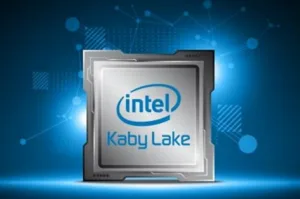The web was rampant with leaked information on Intel’s new Kaby Lake-S platform and its reported support for HDR. Intel has not confirmed this, the information below is rumor, not fact. Nevertheless, such support makes sense and it would not be surprising if true.
The rumors state that upcoming processors based on Intel’s Kaby Lake-S platform will feature integrated graphics that support HDR. That means there will be hardware-based encoding and decoding of VP8, VP9, HEVC 8-bit, and HEVC 10-bit codecs. Currently, Intel’s older Skylake architecture must encode and decode VP9 and HEVC 10-bit codecs using software while the processor has hardware to deal with the other codecs.
The integrated graphics will also support HDCP 2.2 content protection and a support for content in the BBT 2020 wide color gamut container. The graphics core will even enable up to three displays with a 4K resolution at a 60Hz refresh rate, or a single display with a 5K resolution at 30Hz. The integrated graphics will be based on Intel’s GT2 and GT3 cores, depending on the processor model.
What was not revealed was what flavor of HDR decoding will be supported. It is probably a good assumption that HDR10 will be supported, but will Dolby Vision, Technicolor/Philips and HLG be supported? There was no word on this yet.
These new codecs should make Netflix UHD playback possible on Intel’s platform. It should also enable 4K@60Hz YouTube content as well as Google Hangout videos. Chrome, Opera and Mozilla browsers all use VP9 and can benefit from VP9 hardware acceleration support. Microsoft says they will soon support this free codec over the royalty-bearing HEVC codec as well.
There is no official name for the Kaby Lake-S graphics core yet, but based on the sample chip, the upcoming Core i7-7700K itself will have four cores and eight threads, a base clock of 3.6GHz, a boost clock of 4.2GHz, and 8MB of L3 cache. The thermal envelope is unknown at this point, but the processor will be provided unlocked so that overclockers can push its limits.
The Kaby Lake-S series is based on third-generation 14nm process technology, making the processors more efficient and possibly less power hungry when compared to the Skylake chips that are based on second-generation 14nm process technology. Intel has pushed migration to 10nm chip production into 2017.
Unless you are running a Kaby Lake based notebook, it is much better to get a discrete GPU – particularly if you want to play any games or VR. The integrated graphics solution of Kaby Lake is only good for video.
Intel is expected to launch its Kaby Lake-S mainstream desktop processors during CES 2017 in January. They’ll go head-to-head against processors based on AMD’s “Zen” architecture. – CC

